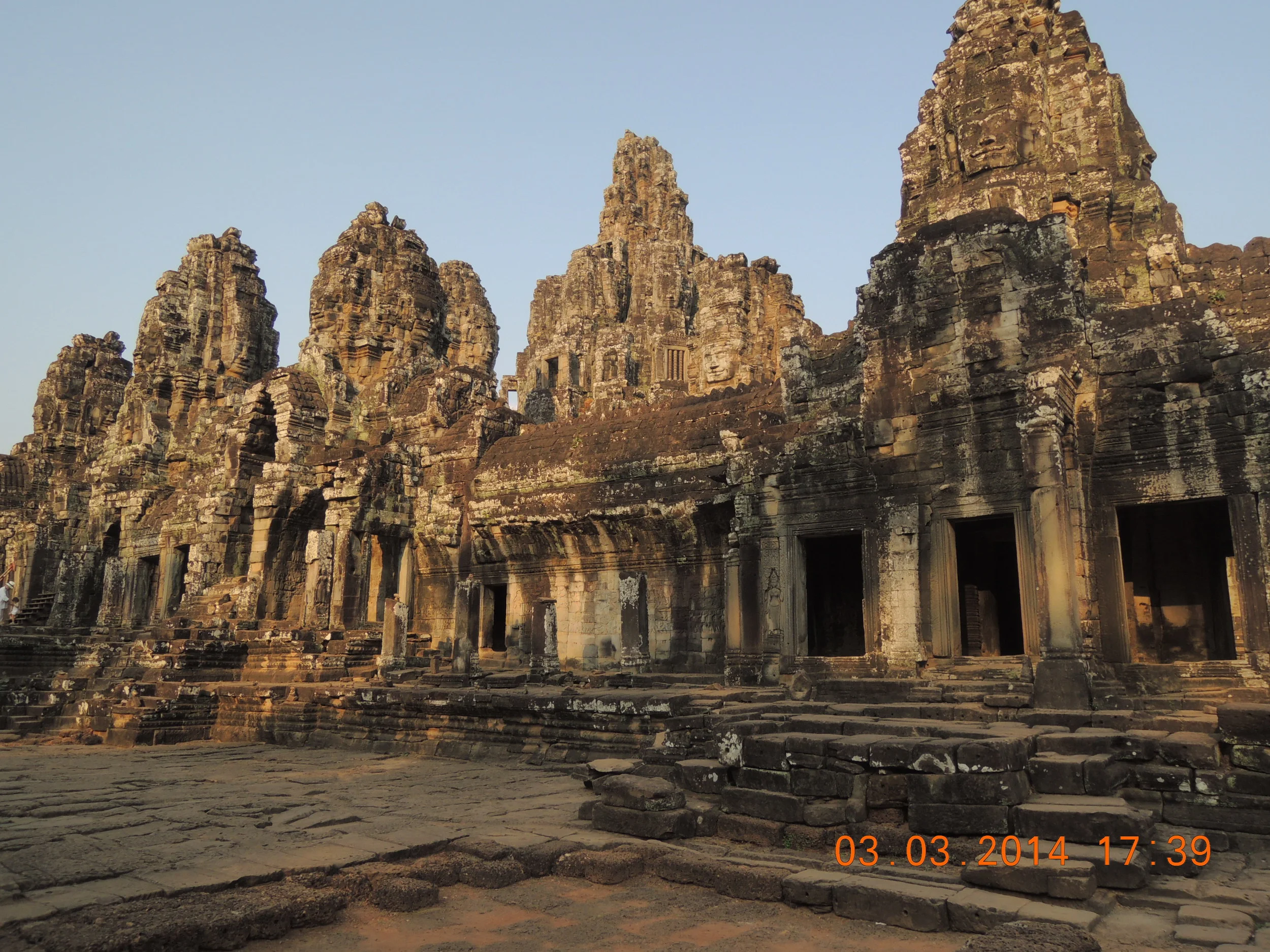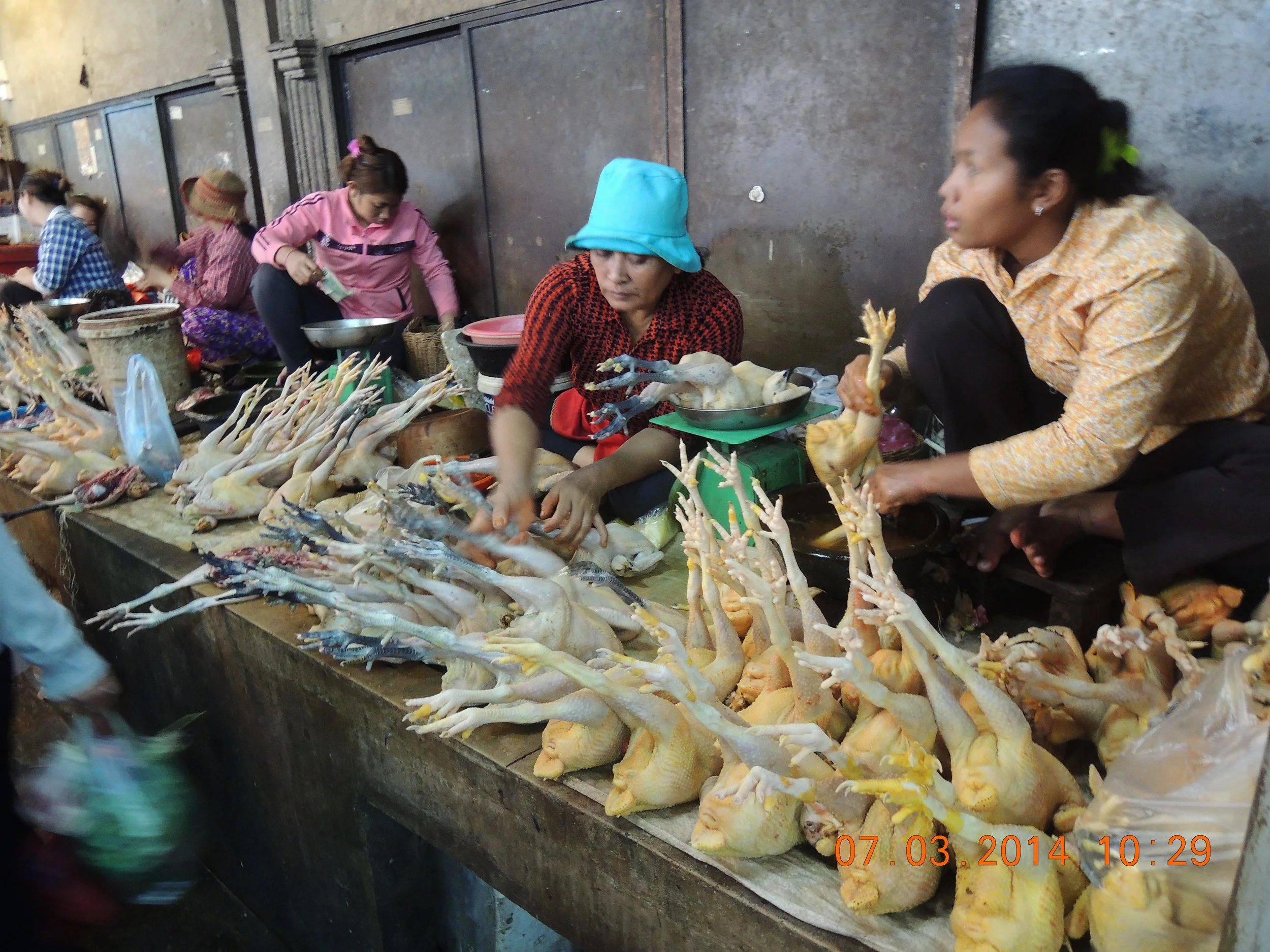Siem Reap is a two hour flight from Singapore. We’re met at the airport by our guide, Kheleur (pronounced Keller), a handsome young man with a slippery way of saying, “Yesss,” at the end of every phrase. He will, over the course of the next several days, fill our ears with historic facts about the temples, the politics, and the culture of Cambodia. He takes us to the hotel (Shinta Mani Resort, very nice) and tells us he’ll pick us up in a couple of hours. We check in, drop our bags, then make our way to the busy district where we find a spa—gotta take care of the important things first. David chooses a back, neck, and shoulder massage (10 dollars) and I have a facial scrub (12 dollars). Then we return to the hotel to meet Kheleur, who takes us to the Angkor Zone, where we see our first ruin, a Buddhist university from the twelfth century.
Two days later, we’ve scrambled over and through ten temples. Dramatic, lovely, and mysterious, they deliver a poignant lesson about fallen civilizations and the intractability of time. Once the walled city surrounding Angkor Thom sheltered a million people; today it’s a scattering of massive jagged walls scattered throughout a forested area where naked children play in mud holes and makak monkeys hunch around like callow thugs. Kheleur has reeled off so many facts about the ancient Hindus and Buddhists that we’re overwhelmed. Here’s a spoonful of history: From 800 to the mid-1200s the temples of Angkor were built by Hindus and Buddhists. The Thais invaded in 1432 and when the Buddhists drove them out in 1555 the capital was relocated to Phnom Pen. This all happened so long ago that I’m stretching to find relevance. I guess it’s relevant because we’ve come to explore the remains.
More interesting than the temples is their current status. This is the story I get from Kheleur: The Cambodian Prime Minister sold the Angkor Zone—approximately 200 sq km of breathtaking ruins—to a businessman in Vietnam. Having sold the country’s greatest asset, the PM promised to spend the money on education and public projects but, due to corruption, no improvements were forthcoming. The population is angry and, if the maniacal glint in Kheleur’s eye is anything to go by, revolution is in the air. Also of interest—the Angkor Zone is a UNESCO World Heritage site, and the restoration work and excavating throughout Angkor is supported by different countries—Germany, India, Japan, Switzerland, China, France, and many more.
A couple of years ago some witless person decided to check out one of the temples, Angkor Wat, at sunrise. Apparently the pink orb peeping from behind the rugged ruin was so stunning that he felt compelled to take a picture. This is how stupid traditions are born. (I’ll never forget the all-night trek to the top of Mt. Sinai—what hell that was!) So, because it’s expected of tourists, David and I get up and out at five a.m. and go to Angkor Wat in the dark with fifteen hundred other people. We stand for over an hour with the people behind us coughing and sneezing on our shoulders, cameras snapping all around. It’s a hazy morning and the sun never shows. The sky simply goes from dark gray to light gray. And we all go our separate ways. Later we go to the Old Market which is smelly with fish and dead chickens and unfamiliar fruits and vegetables. Flies buzz and small dark people mill and call out. Further in, past the piles of shiny satin pillow covers and rows of elephant pants, we come upon a booth that sells silk. Stored in a glass-fronted cabinet, the stacks of colorful fabric are ten feet tall and span the entire back wall of the booth. Ten dollars a meter! I don’t know about the Buddhists’ nirvana, but I’ve sure reached mine. Silk is thirty-five dollars a meter in Singapore. I buy two meters each of black, green, gray, and pale yellow. It’s time to go home.
Angkor Bayon
Angkor Wat, the dawn that wasn't.
The crowd waiting for the sunrise that never happened.
Kheleur explains while I gaze.
Buddahs pop up everywhere in the Angkor Zone.
The Old Market is a busy smelly place.
David having a gin and tonic at the end of our day in the Cambodian countryside.








